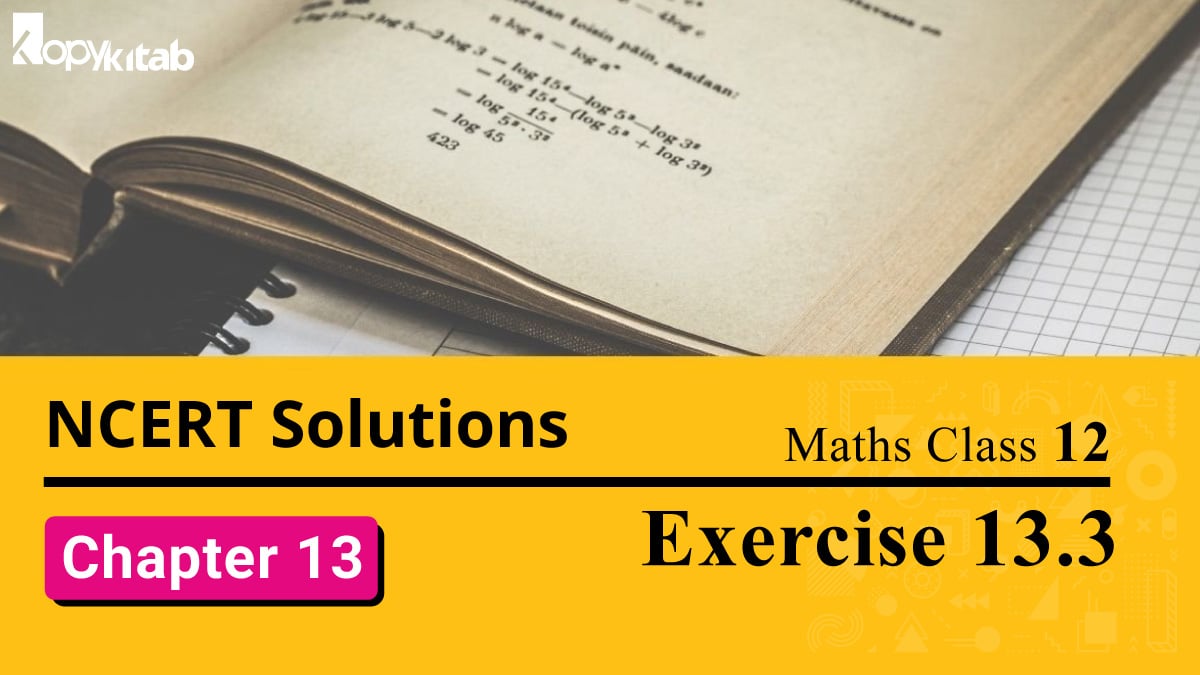NCERT Solutions Class 12 Maths Chapter 13 Exercise 13.3 is based on the Bayes’ Theorem which includes Partition of a sample space and the theorem of total probability. You can have the look for these solutions which are created by our experts. These solutions will be very helpful during your exam preparation for the Class 12 CBSE board exam.
In this article, you can easily download the PDF for the NCERT Solutions Class 12 Maths Chapter 13 Exercise 13.3.
Download Free PDF for NCERT Solutions Class 12 Maths Chapter 13 Exercise 13.3
NCERT Solutions for Class 12 Maths Chapter 13 Exercise 13.3
Solve all the problems of this Exercise to get through with the concepts and topics covered under the Bayes’ Theorem of the Chapter Probability.
Detailed topics included in NCERT Solutions Class 12 Maths Chapter 13 Exercise 13.3
In facts and possibility theory, the Bayes’ theorem (additionally referred to as the Bayes’ rule) is a mathematical method used to decide the conditional possibility of events. Essentially, Bayes’ theorem describes the possibility of an occasion primarily based totally on earlier expertise of the situations that is probably applicable to the occasion.
The formula for Bayes’ Theorem
The Bayes’ theorem is expressed in the following formula:
P(A|B) = P(B|A) P(A) / P(B)
Where:
- P(A|B) – the probability of event A occurring, given event B has occurred
- P(B|A) – the probability of event B occurring, given event A has occurred
- P(A) – the probability of event A
- P(B) – the probability of event B
Note that events A and B are independent events (i.e., the probability of the outcome of event A does not depend on the probability of the outcome of event B).
This theorem at instances is likewise referred to as inverse possibility theorem.
Let us remember any occasion ‘A’ of pattern space ‘S’ (as withinside the preceding section).
This occasion could have befallen because of the one-of-a-kind causes (or because of the prevalence of any of the occasion A1, A2, L An).
Now, allow us to say that occasion A is discovered to have befallen and we need to discover the possibility that it has befallen to the prevalence of causes, says Ai.
That way we’re inquisitive about P(Ai/A). These forms of issues are solved with the assist of Bayes’ theorem.
Access to Other Exercise of Class 12 Chapter 13
Chapter 13: Exercise 13.4
Chapter 13: Exercise 13.5
Don’t wait any longer. Download the NCERT answer for exercising 13.2 in Chapter thirteen of Mathematics for kind 12. All those answers can be of splendid assist for the duration of the instruction of the exam.
FAQ: NCERT Solutions Class 12 Maths Chapter 13 Exercise 13.3
How many questions are there in NCERT Solutions Class 12 Maths Chapter 13 Exercise 13.3?
There are 17 questions in NCERT Solutions Class 18 Maths Chapter 14 Exercise 13.3
What are the topics included in NCERT Solutions Class 12 Maths Chapter 13 Exercise 13.3?
NCERT Solutions Class 12 Maths Chapter 13 Exercise 13.3 is based on the Bayes’ Theorem which includes Partition of a sample space and the theorem of total probability.
What is Bayes’ theorem?
The Bayes’ theorem (additionally referred to as the Bayes’ rule) is a mathematical method used to decide the conditional possibility of events.
Is 12th-grade math difficult?
Yes, the math test is difficult. You must go all out to achieve good results.
Is probability a sample chapter?
Yes, the probability is indeed simple.
What is the probability of impossible?
The probability of an impossible event is 0.
Can I download NCERT Solutions Class 12 Maths Chapter 13 Exercise 13.3 PDF on my smartphone?
Yes, you can download NCERT Solutions Class 12 Maths Chapter 13 Exercise 13.3 PDF on my smartphone.
